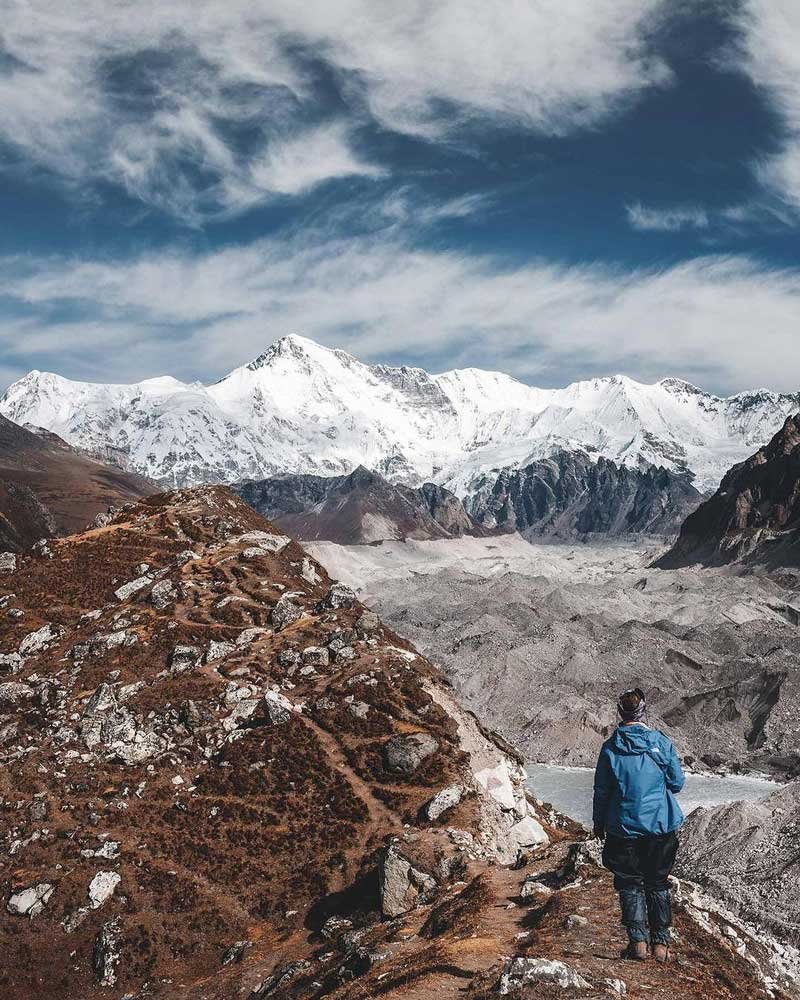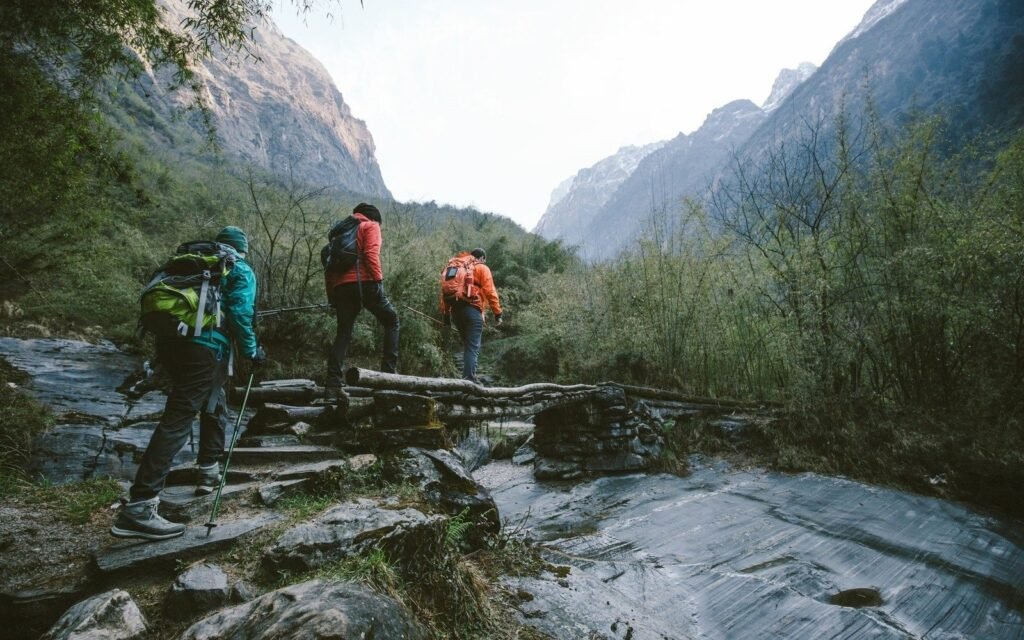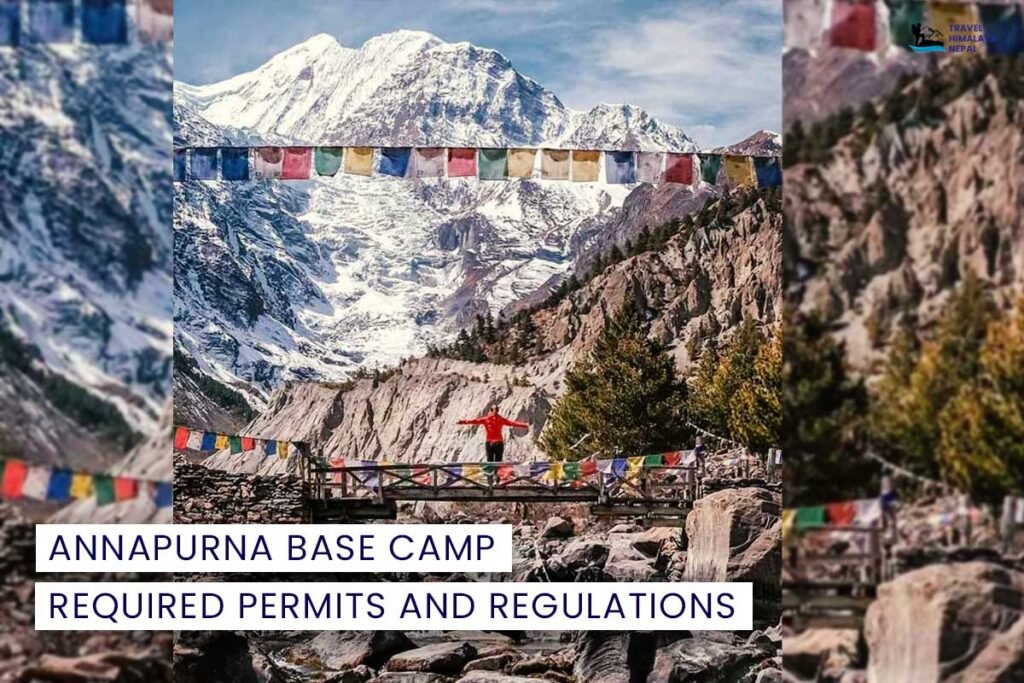For countless adventurers, Mount Everest stands as the ultimate challenge. Its snow-capped peak, piercing the thin air at 29,031 feet (8,848.86 meters), beckons with a promise of unparalleled accomplishment. The dream of scaling Everest, of standing atop the world, is a powerful one.
However, alongside the allure of this iconic mountain lies a growing concern – the environmental impact of human activity on Everest. The harsh reality is that the increasing number of climbers is taking a toll on the delicate ecosystem of this region. As the number of expeditions rises, so too does the challenge of preserving the majesty of Everest for generations to come. Let’s also explore Environmental Conservation on Everest.
This article delves into the environmental struggles of Mount Everest, highlighting the impact of climbers, the ongoing conservation efforts, and the path forward for a more sustainable future for this legendary peak.
How Climbers Impact Everest?: Environmental Conservation on Everest
The summit of Everest represents the pinnacle of human achievement, a testament to our strength and determination. However, this success comes at a cost. The harsh environment of Everest, coupled with the increasing number of climbers, has created a significant environmental burden.
A Mountain of Trash:
The most visible consequence is the accumulation of waste. Food packaging, climbing gear discarded due to breakage, and even empty oxygen canisters litter the slopes. The extreme conditions at high altitudes make descent with trash incredibly difficult, leading climbers to leave their unwanted gear behind. The shocking reality? It’s estimated that each climber generates around 8 kilograms (18 pounds) of waste during their expedition, with a staggering total exceeding 12,000 kilograms (26,500 pounds) left behind annually.
Beyond Trash: Potential Pollution
The environmental impact goes beyond just visible waste. Improper disposal of human waste, particularly at high camps, can contaminate water sources downstream. Additionally, the use of kerosene for cooking and heating at base camps creates a potential for air pollution. While the vastness of the Himalayas dilutes these effects to some extent, the long-term consequences remain a serious concern.
Crowding the Peak: Environmental Conservation on Everest
The allure of Everest has seen a dramatic rise in the number of climbers attempting the summit. This increased human presence puts stress on the fragile ecosystem. The constant movement of climbers tramples vegetation and disrupts wildlife habitats. Furthermore, competition for resources like water and shelter can intensify during peak climbing seasons.
The environmental impact of climbers on Everest is undeniable. However, it’s important to remember that these challenges are not insurmountable. The next section will explore the ongoing efforts to conserve this iconic peak.
Conservation Efforts on Everest
The environmental challenges facing Everest are significant, but there’s a growing movement dedicated to protecting this majestic peak. Here, we explore the ongoing conservation efforts striving to ensure a sustainable future for Everest.
Cleaning Up the Past, Protecting the Future:
One of the most visible initiatives is the Everest Clean Up Campaign. Launched in 2008, this ongoing effort tackles the mountain’s existing waste problem. Teams of dedicated individuals tirelessly work to remove accumulated trash from various points on Everest. The results are impressive – the 2018 campaign alone collected a staggering 38,905 kilograms (85,773 pounds) of waste. These clean-up expeditions are crucial not only for restoring the visual beauty of Everest but also for safeguarding the ecosystem from long-term harm.
The Sagarmatha Pollution Control Committee (SPCC) is on the Front Lines:
Established in 1991, the SPCC plays a vital role in coordinating and implementing conservation efforts on Everest. The committee focuses on waste management strategies, working towards minimizing waste generation at the source and establishing efficient disposal methods. One such initiative involves building composting toilets at Base Camp, significantly reducing the risk of human waste contaminating water supplies. Additionally, the SPCC promotes waste segregation at Base Camp, allowing for easier recycling and responsible disposal of different types of waste.

Climbers Can Be Part of the Solution:
The responsibility for preserving Everest doesn’t solely lie with organizations. Climbers themselves can play a crucial role in minimizing their environmental footprint. A key principle is “pack it in, pack it out” – ensuring all trash generated during the expedition, including food packaging and used gear, is brought back down the mountain for proper disposal. Choosing eco-friendly gear, such as biodegradable waste bags, further reduces the environmental impact.
Travelers can also contribute by choosing trekking companies committed to conservation. These companies prioritize responsible practices, such as employing clean fuel sources at base camps and implementing waste management plans for their expeditions.
By working together – climbers, organizations, and local communities – we can ensure that the dream of conquering Everest continues alongside the crucial mission of protecting this irreplaceable natural wonder.
- Explore: Everest Base Camp Guides
Conclusion: A Shared Responsibility
The majesty of Everest beckons adventurers from around the world. However, the privilege of attempting this summit comes with a responsibility – to minimize our environmental impact and ensure the mountain’s continued beauty for generations to come.
By adopting responsible trekking practices, such as packing out all trash and choosing eco-friendly gear, each climber can contribute to a cleaner and healthier Everest. Remember, every action counts. It’s a shared responsibility to ensure that the dream of conquering Everest goes hand in hand with the crucial mission of protecting this irreplaceable wonder of our planet.
FAQs: Environmental Conservation on Everest
1. How does climbing Everest impact the environment?
Climbers contribute to waste accumulation (food packaging, gear, human waste), potential air and water pollution from fuel sources and waste, and increased stress on the ecosystem due to overcrowding.
2. How much trash is on Mount Everest?
Estimates suggest each climber generates around 8 kilograms (18 pounds) of waste, leading to a staggering 12,000 kilograms (26,500 pounds) left behind annually.
3. What are some initiatives to clean up Everest?
The Everest Clean Up Campaign removes accumulated waste, while the Sagarmatha Pollution Control Committee (SPCC) focuses on waste management strategies like composting toilets and waste segregation at Base Camp.
4. How can climbers minimize their environmental impact on Everest?
Climbers can practice “pack it in, pack it out” by bringing down all trash, use eco-friendly gear, and choose trekking companies committed to conservation practices.
5. What are the challenges of dealing with human waste at high altitudes on Everest?
Current methods like deep trenches pose health and environmental risks. Biogas projects are a promising solution for converting waste into usable energy.
Everest Base Camp and Sherpa Culture: Trek Through Tradition
6. How can governments and local communities contribute to Everest’s conservation?
Governments can fund conservation initiatives and enforce stricter waste management regulations. Local communities with their knowledge of the ecosystem are crucial partners in long-term conservation efforts.
7. What are some things to consider when choosing a trekking company for Everest?
Look for companies committed to conservation practices like using clean fuel sources and implementing waste management plans for expeditions.
8. Besides cleaning up existing waste, what else can be done to ensure Everest’s future?
Sustainable practices like using biogas projects and ongoing collaboration between climbers, governments, and local communities are essential for a sustainable Everest.













